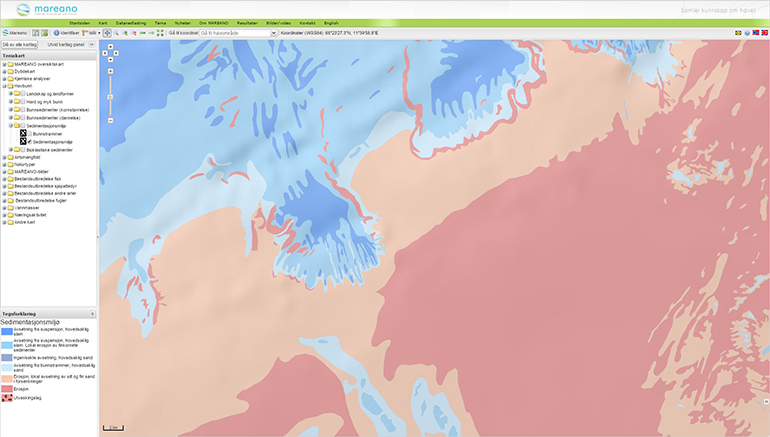
Sedimentary environment

The Sedimentary environment map is based on the maps for Seabed sediments (grain size) and Seabed sediments (genesis). The main purpose of the map is to show areas of erosion and deposition of sediments, and how bottom currents influence the seabed. Areas of deposition of fine-grained sediments (mud and sandy mud) are primarily found in deep areas. In shallower areas, fine-grained sediments may erode locally on topographic highs, while sand is deposited on the lee side of such highs, where the bottom currents may be weaker. The shallowest areas are dominated by current erosion; however, fine-grained sediments may accumulate in local depressions found in the shallow areas. A lag deposit comprised of sandy gravel, cobbles and boulders is often formed where bottom currents are strong. Grain size indicates the strength of the bottom currents; mud suggests the presence weak bottom currents, while coarser sediments or erosion suggest stronger currents.
Bottom current directions can be determined by studying the areas where eroded sediments are deposited. If transported sediments are deposited along only one side of an iceberg plough mark, the sediments are coming from that side to be deposited in lee. Modelling of bottom currents shows large variations in current direction and current strength depending on time of the year and tidal cycles.
Mapping is performed in line with Mareano's Standard for geological seabed mapping offshore and in accordance with standard procedures for map production and quality control.
